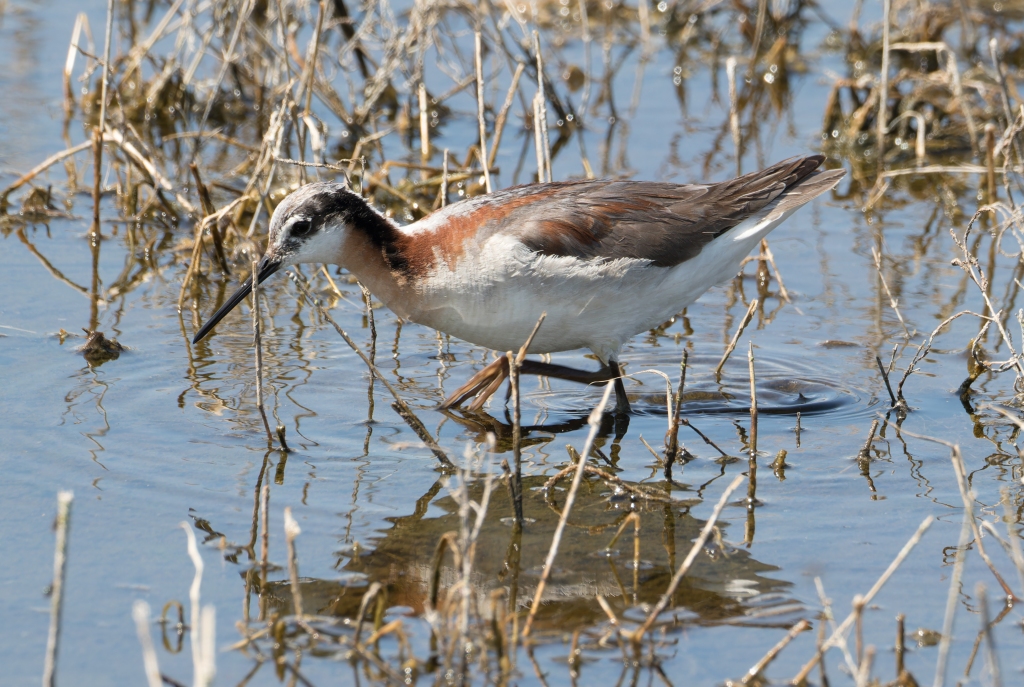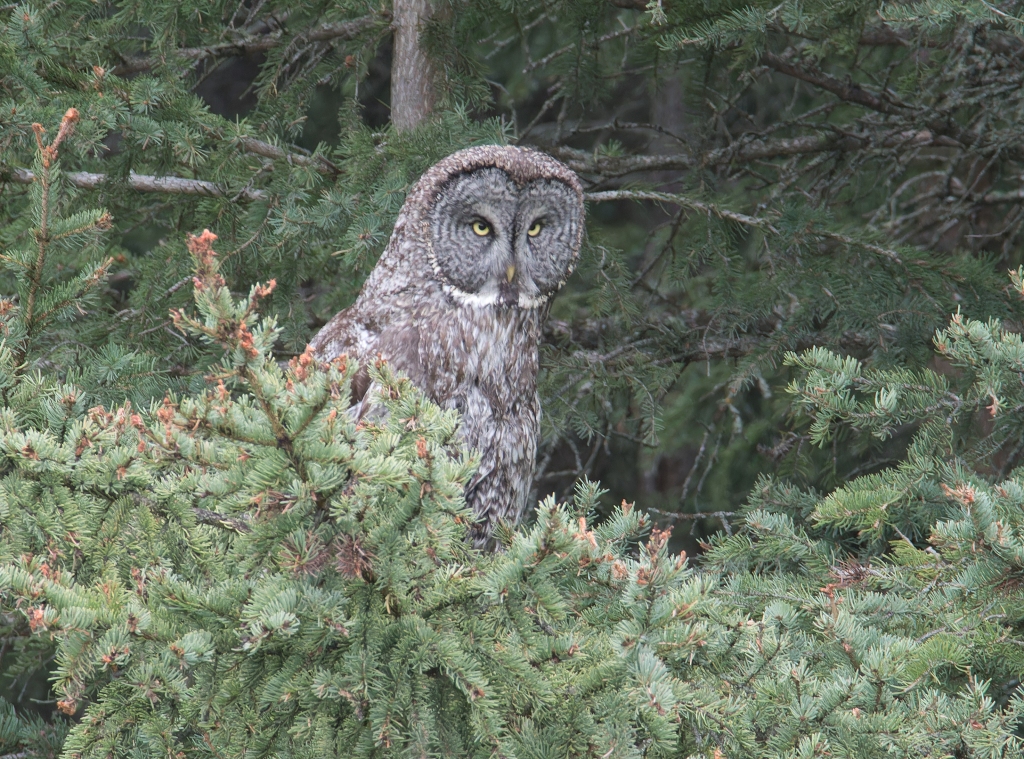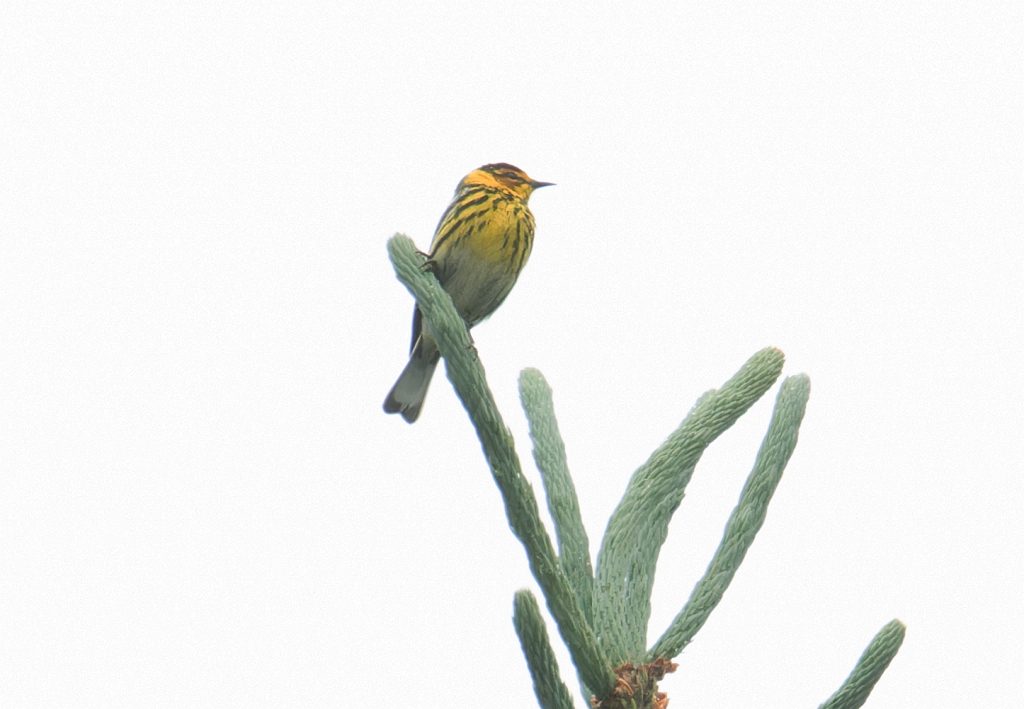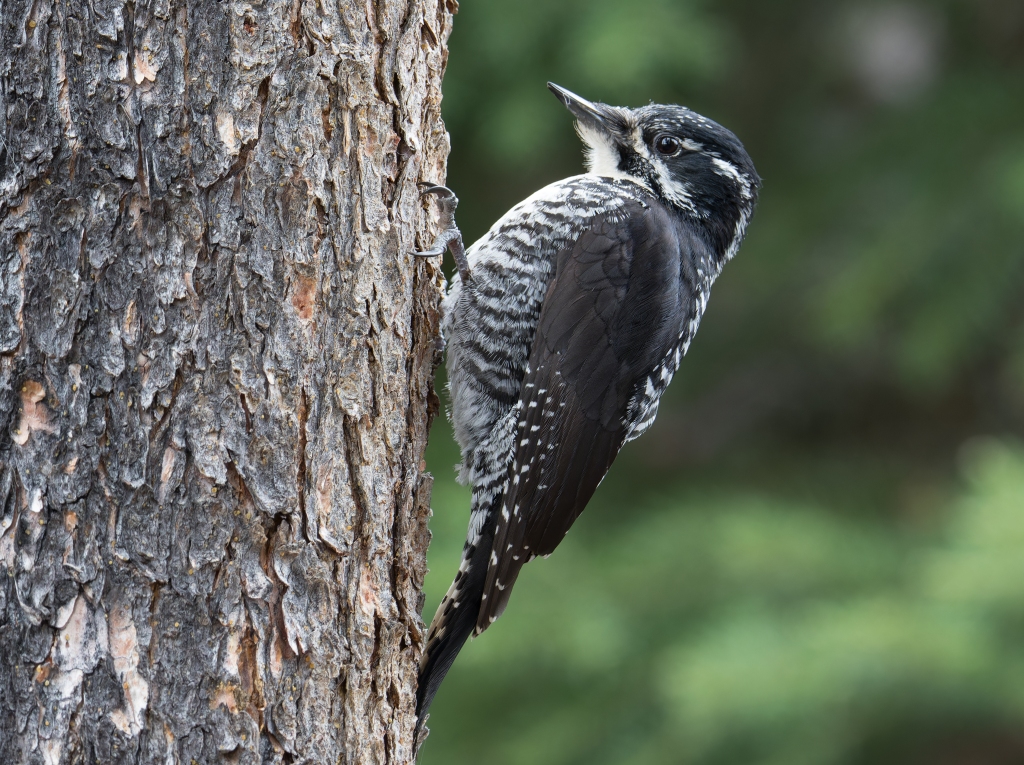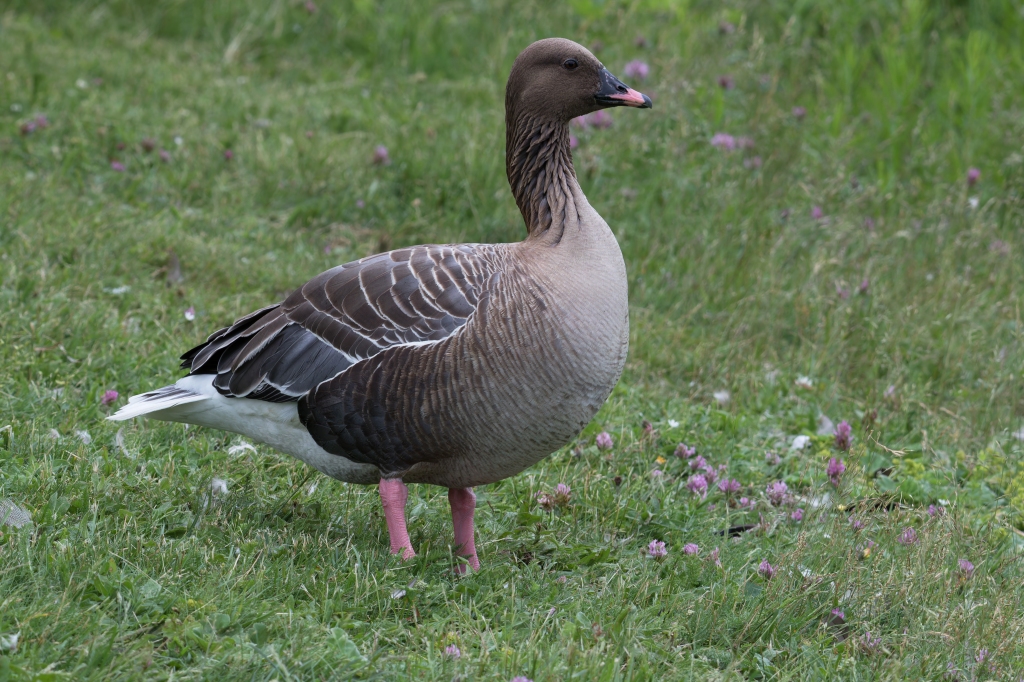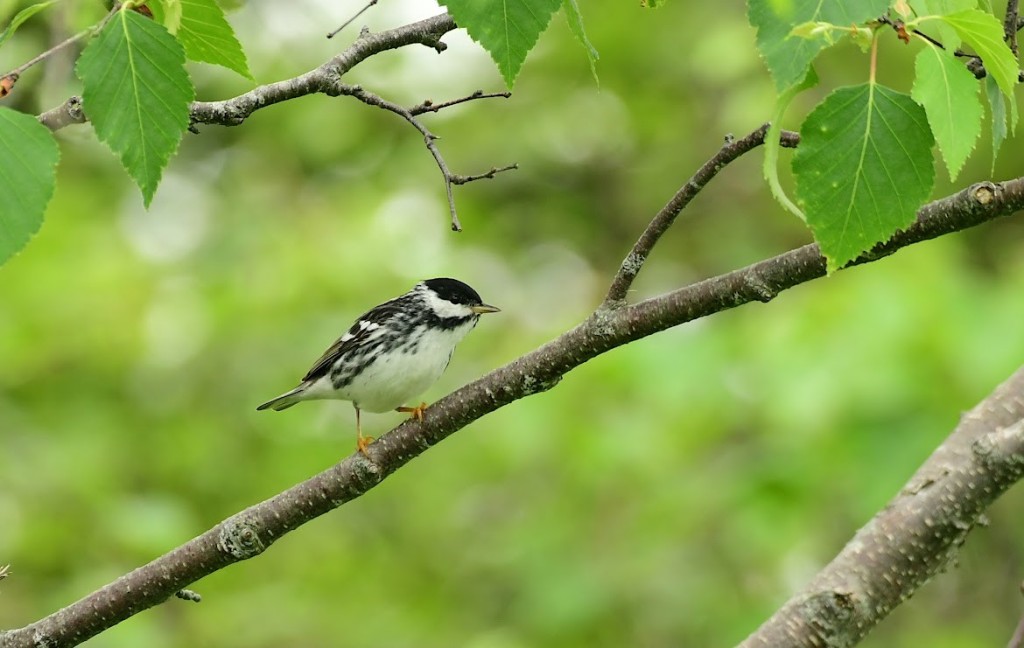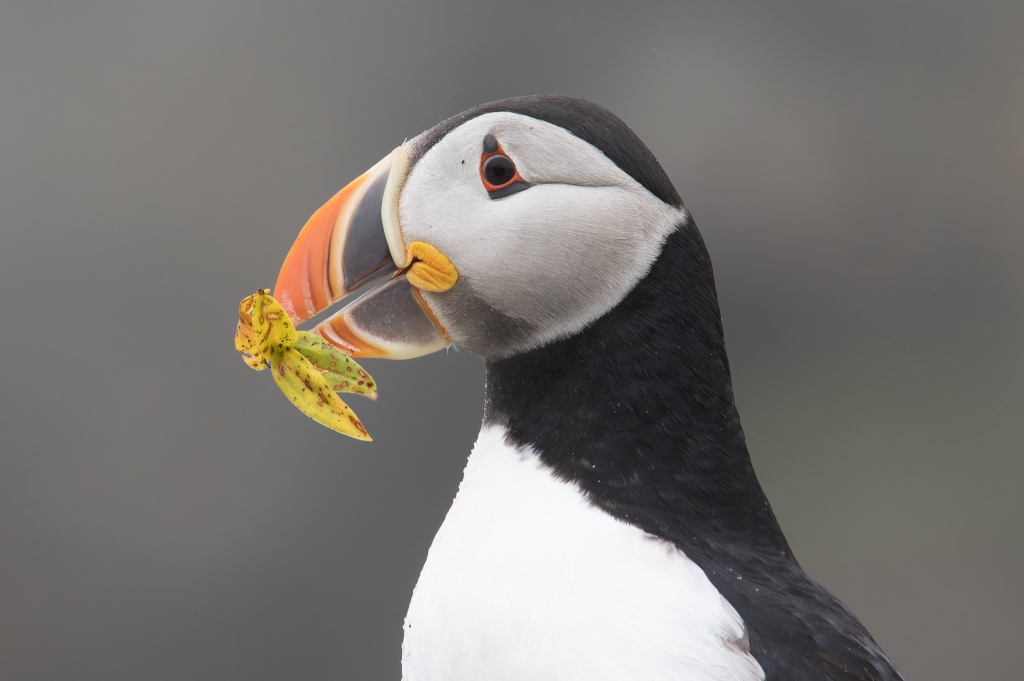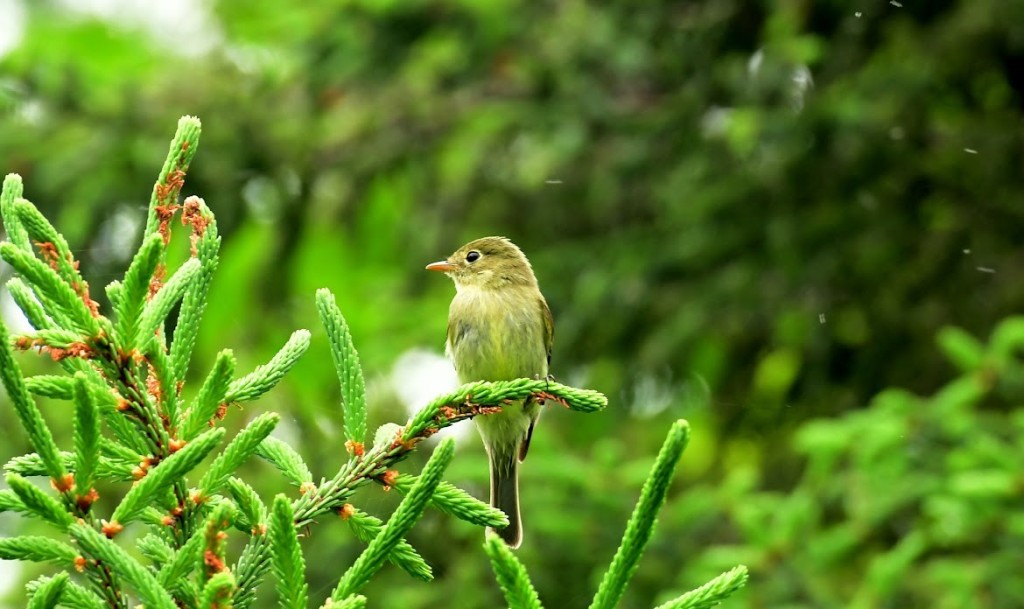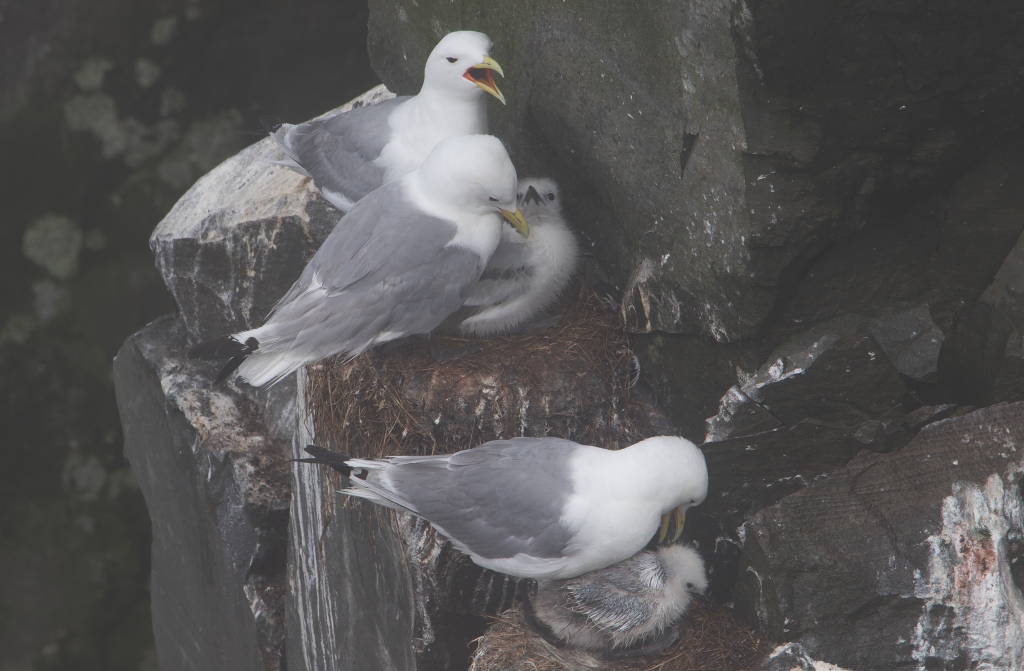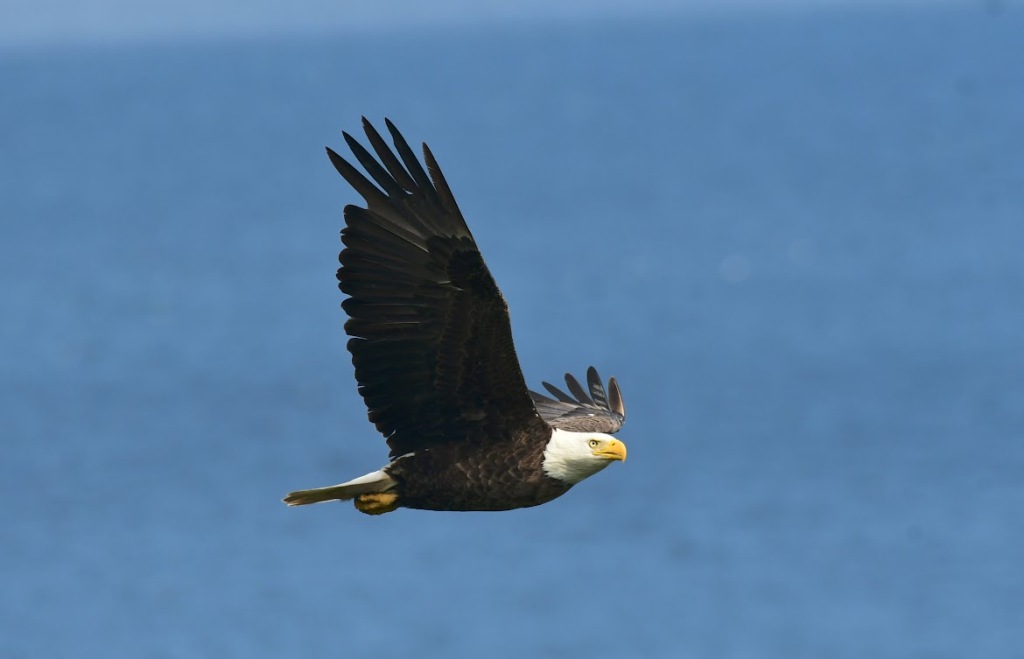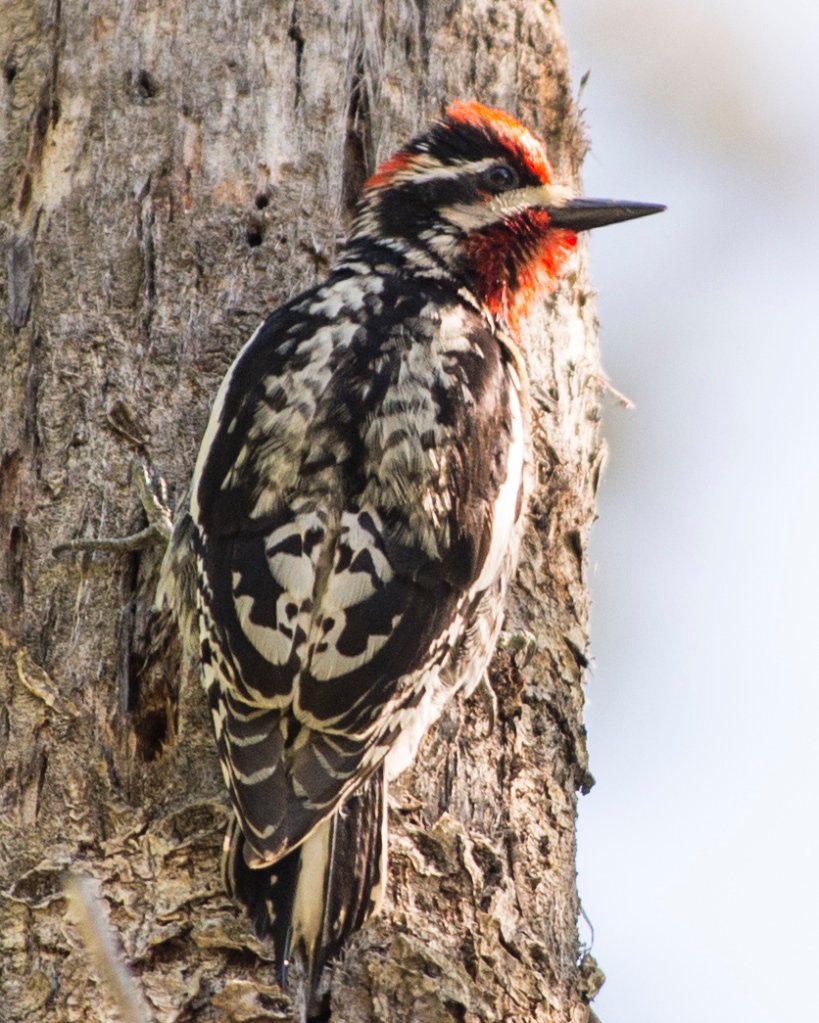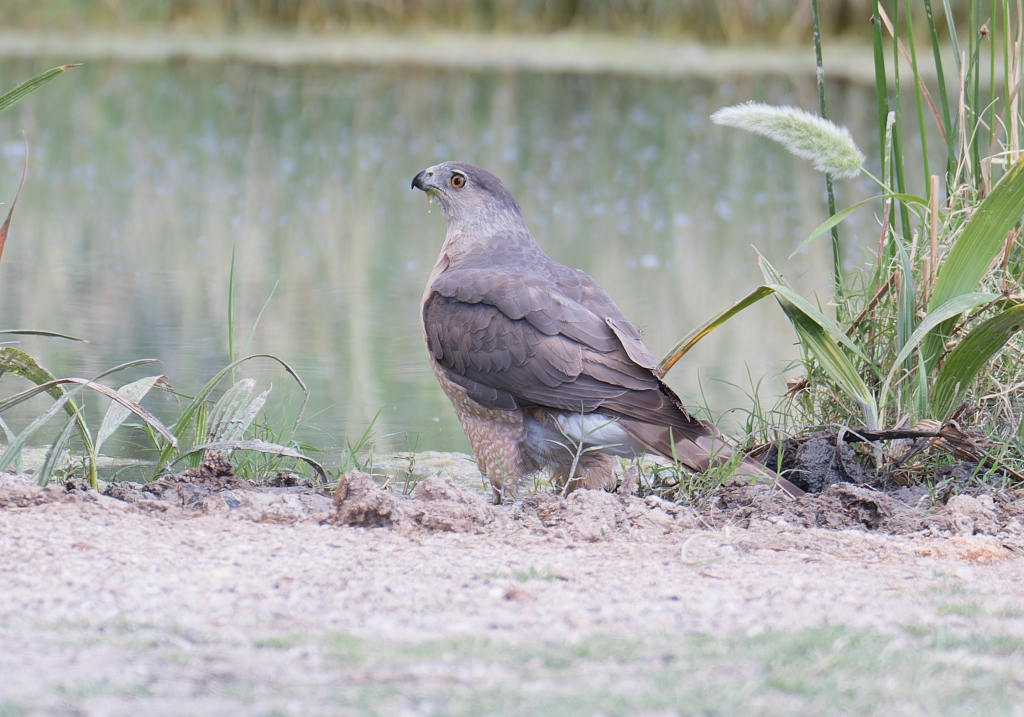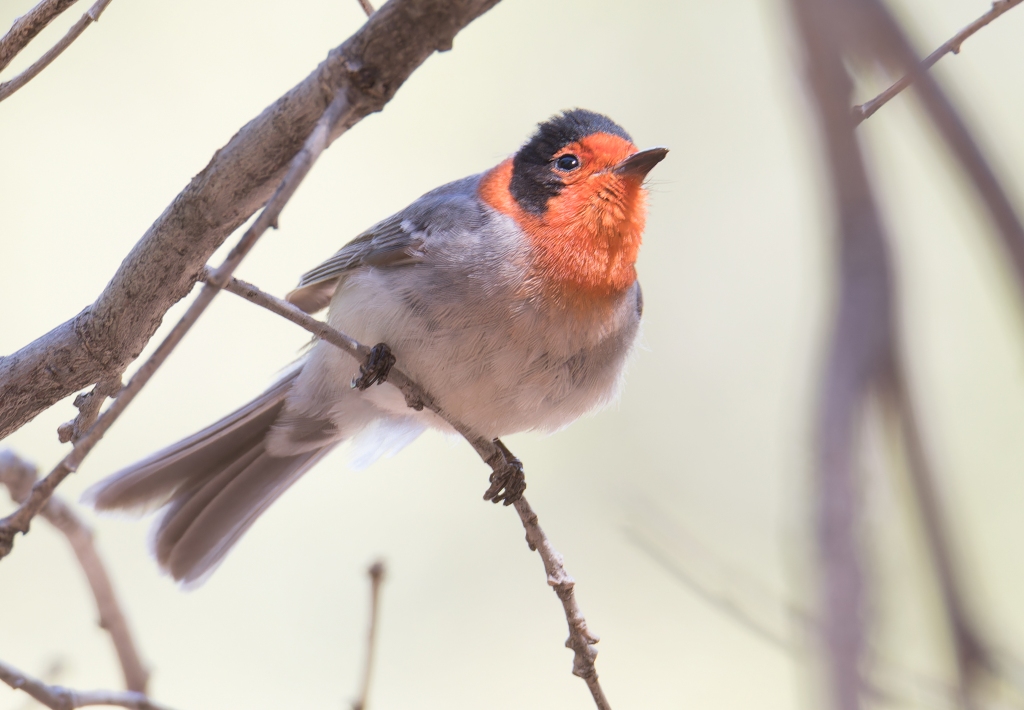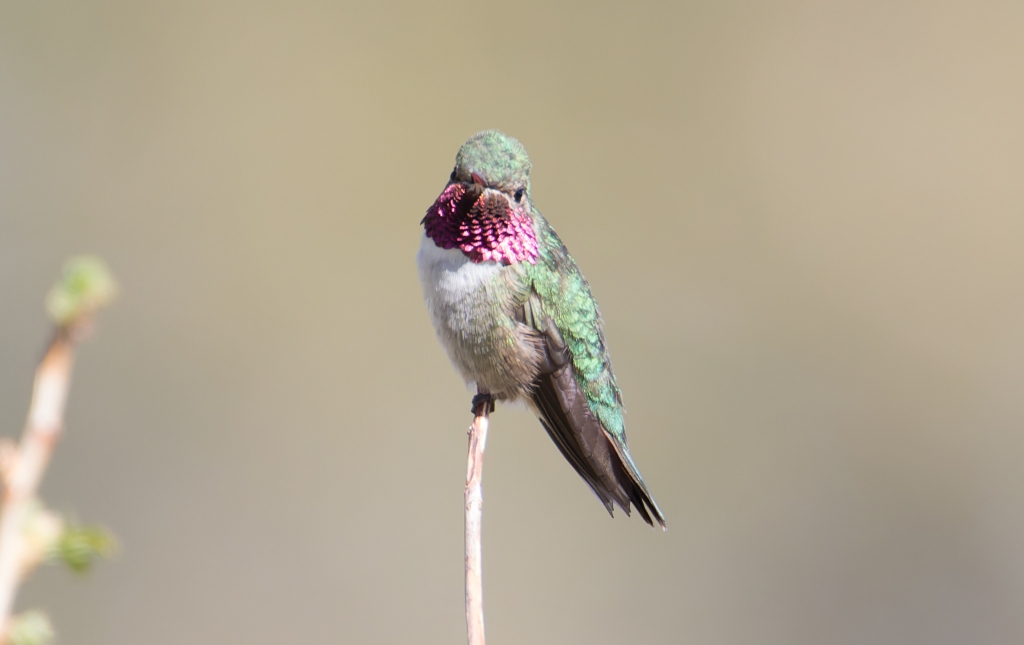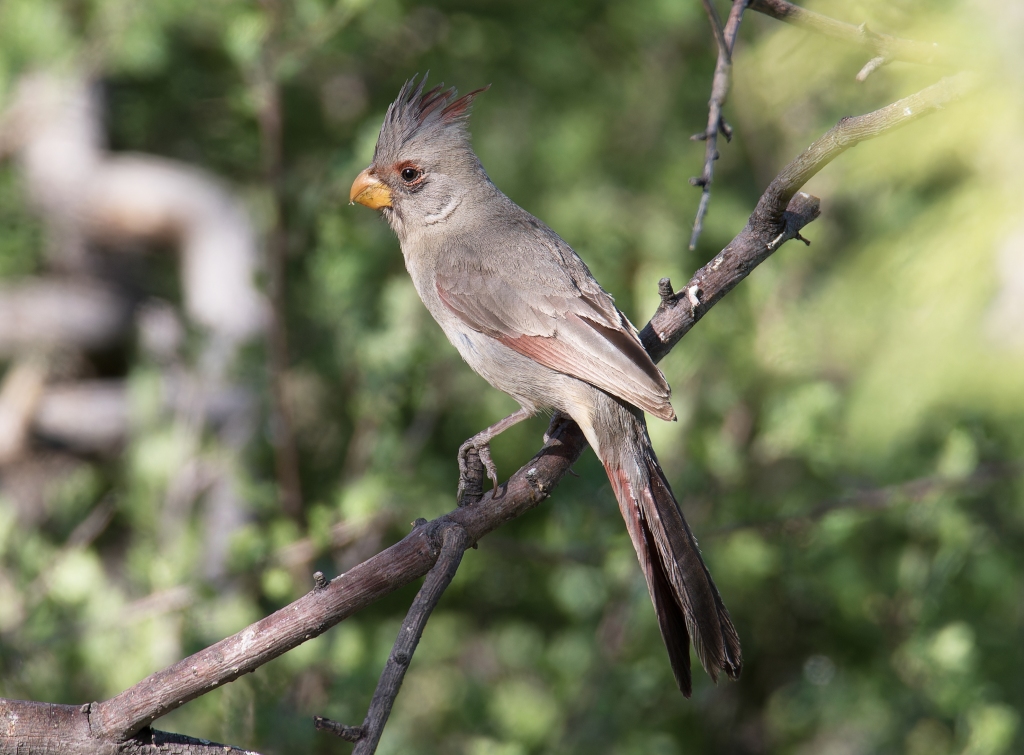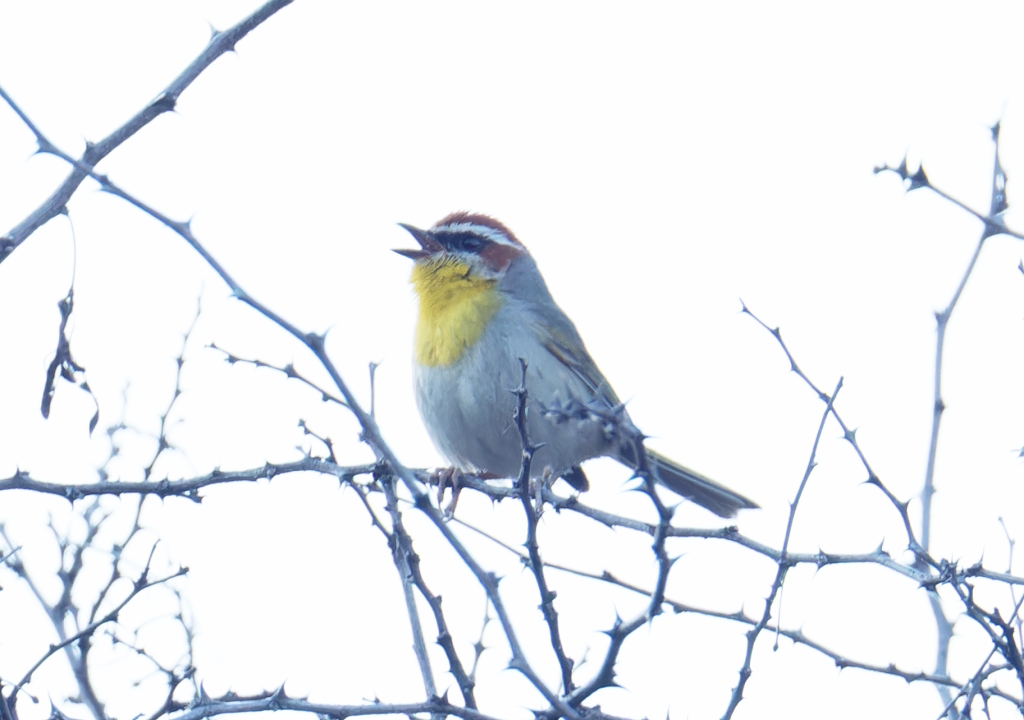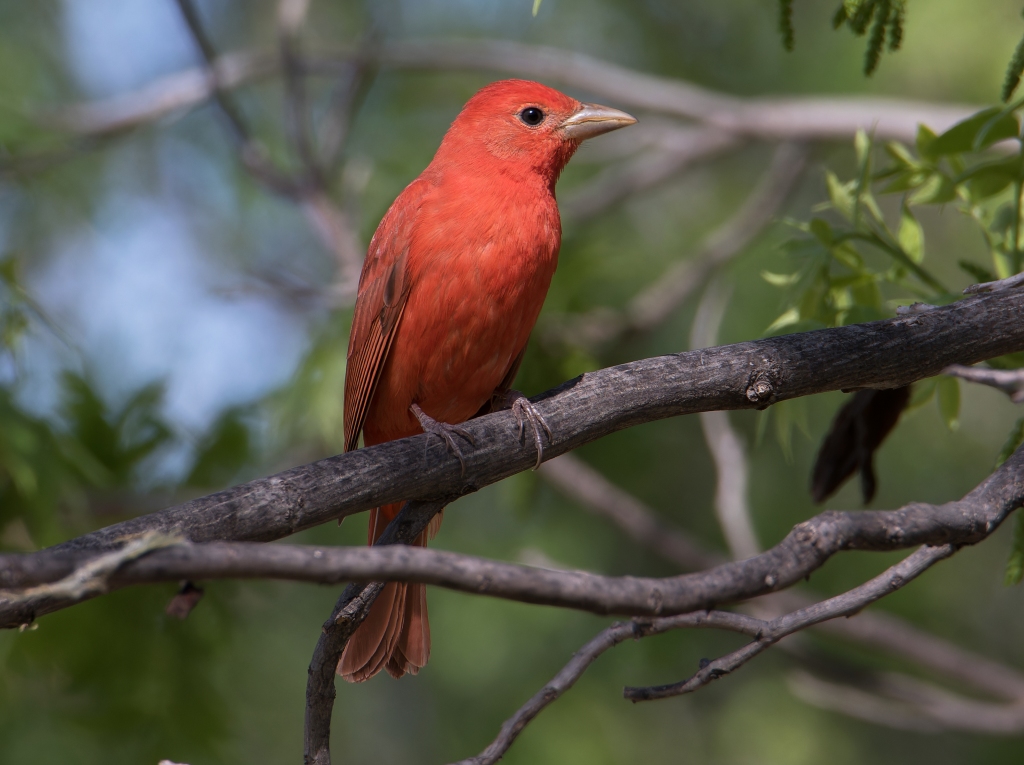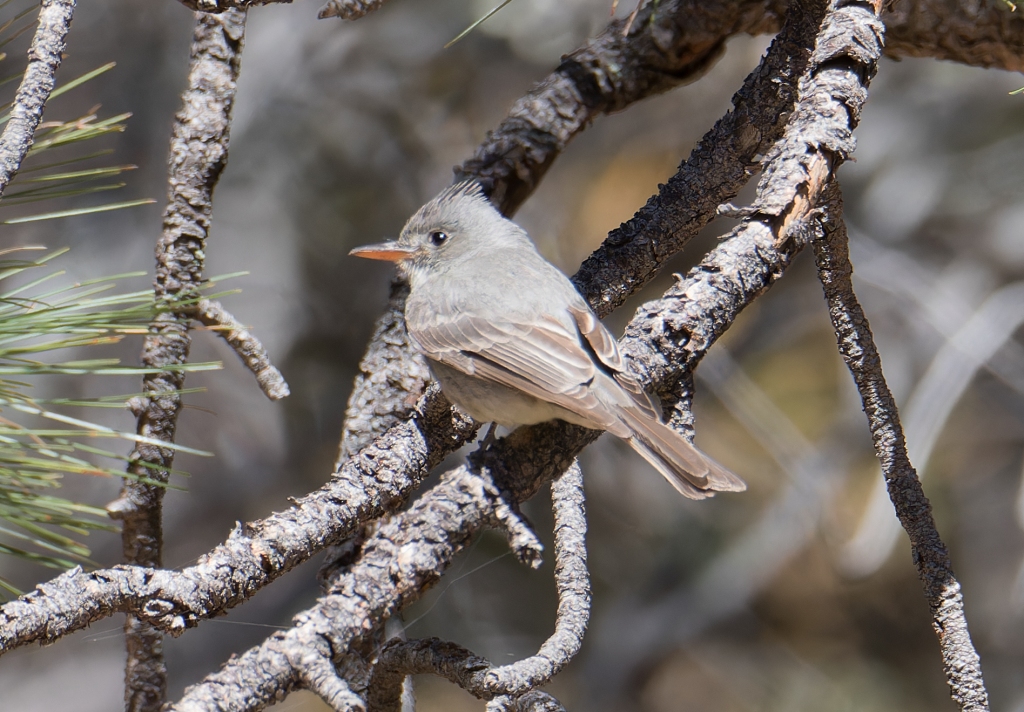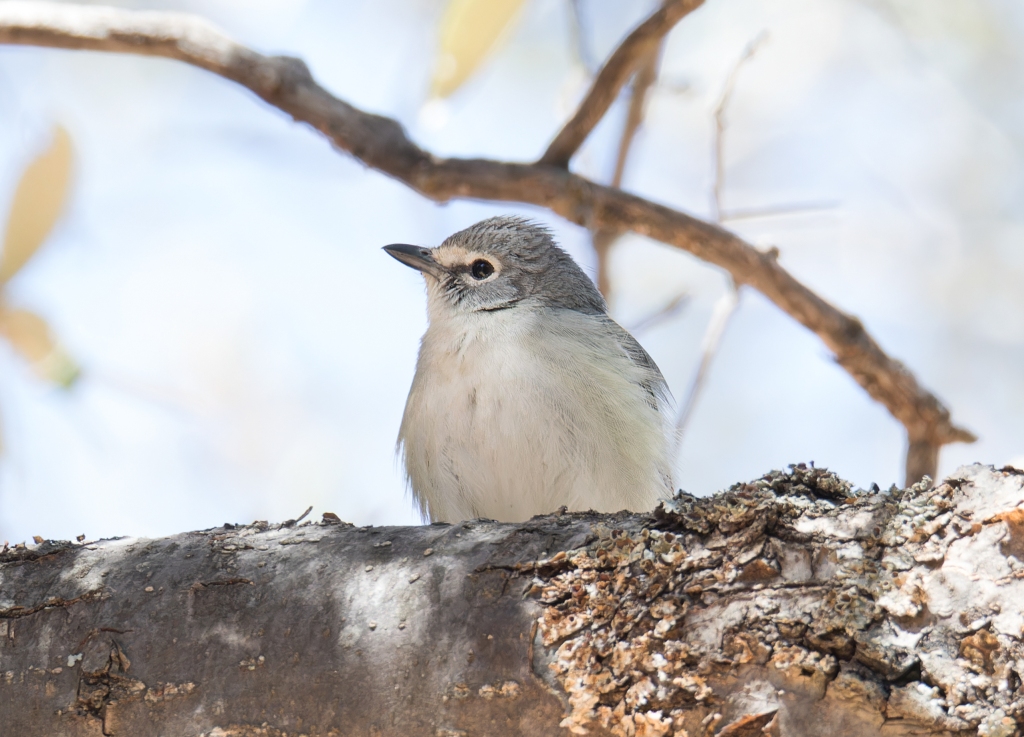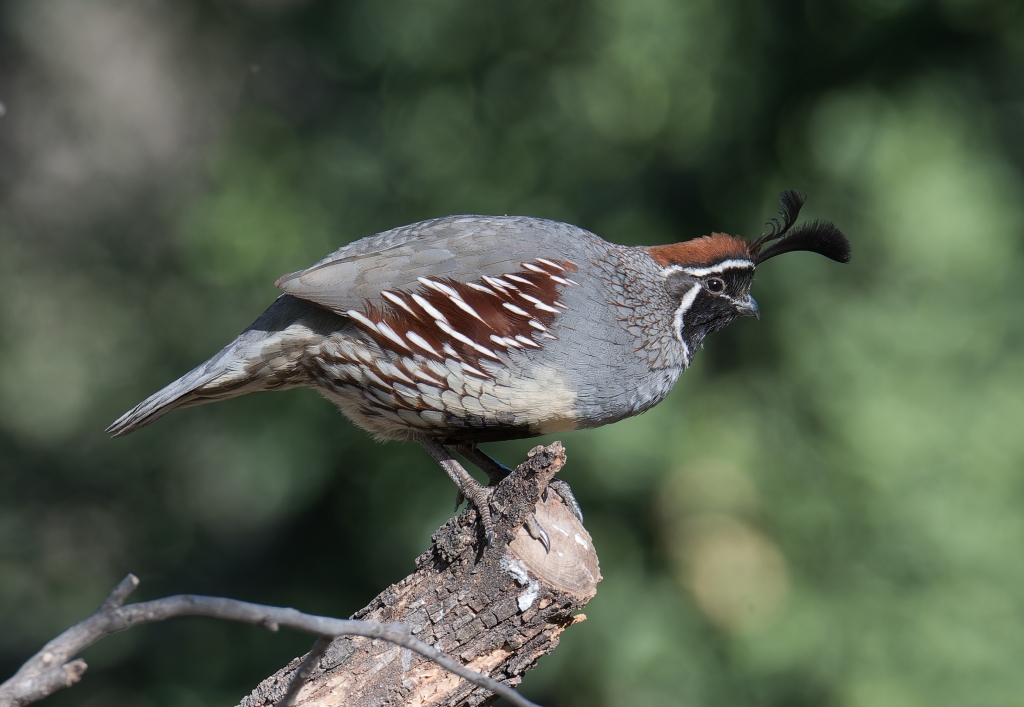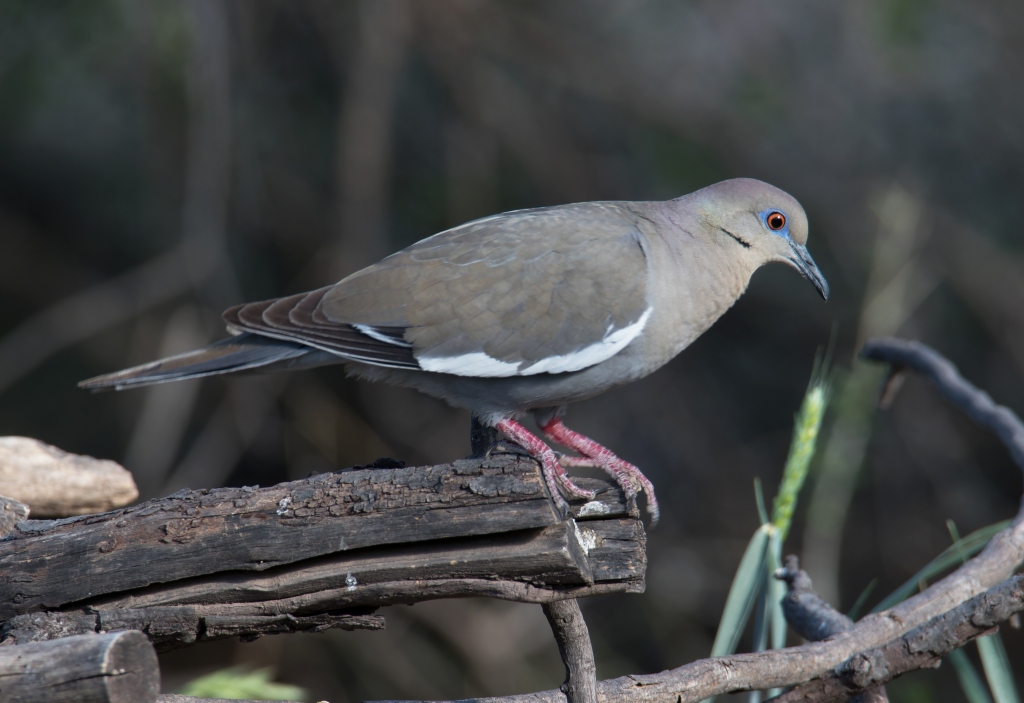June 16 – The group arrived this afternoon on a flight from London Heathrow Airport. We made the short transfer over to our hotel and headed out to do a little birding at the Mattamy Wetlands. This was a great introduction to the birds of the area. We enjoyed watching both Red-winged and Yellow-headed blackbirds in the marshes, and we also saw a couple of Common Grackles. Common Yellowthroat sang its ‘witchity witchity’ song from within the reeds, but remained hidden. Waterfowl were plentiful. There were Gadwall, Mallards, Northern Shovelers, Lesser Scaup and Blue-winged and Green-winged teal. Up to 10 Eared Grebes were nesting on their floating nests, and shorebirds included a Killdeer and a couple of summering Greater Yellowlegs. We noted Clay-colored and Savannah sparrows, as well as Violet-green and Tree swallows, Northern Flicker and a pair of ‘Prairie’ Merlins! Dinner at Pacinis was delicious.
June 17 – After breakfast we headed south of Calgary to High River, where we had a pitstop and picked up some coffee and muffins from Tim Horton’s. We then made our way to Frank Lake where we spent the rest of the morning. It was a sunny and beautiful morning in fact, and we saw a lot of great things. On our way to the lake, we paused to see our first Western Meadowlarks, Eastern Kingbirds, Brown-headed Cowbirds and Vesper Sparrow. A single Gray Partridge flushed from the roadside here, interesting to me, but not so much for the Brits who see them more often back home. Once at the lake, the birds came fast and furious. We were happy to see ‘prairie nesting’ shorebirds like Willet, Marbled Godwit, Wilson’s Phalarope, American Avocet and Black-necked Stilts.
American White Pelican flocks circled in the sky above the lake, and 30 or more were resting on a small island. Also on the island were loads of California Gulls, and a single Ring-billed Gull. Franklin’s Gulls were also abundant today, and we saw just three Forster’s Terns. Double-crested Cormorants were also numerous, and we saw several each of Black-crowned Night-Heron and White-faced Ibis as well. Loads of Yellow-headed and Red-winged blackbirds were again front and center, and we caught a glimpse of a Marsh Wren as well, though a number of them were heard. Soras put on a nice show, wandering about at the edge of the marsh for good views. Waterfowl again were plentiful. We saw Redheads, Canvasbacks, loads of Ruddy Ducks and two pairs of Cinnamon Teal. Mammal of the day was undoubtedly the many Richardson’s Ground-Squirrels we saw.
We had lunch at Smitty’s in High River and after lunch we checked a small pond near the restaurant. We found a female Common Goldeneye here with a brood of tiny chicks. After lunch we took a drive up a range road north of Frank Lake where we enjoyed watching both Western and Eastern kingbirds, as well as various sparrows and a Swainson’s Hawk that was not too happy with us. We must have been close to its nest. As the afternoon wore on, thunder clouds built in the sky and several loud claps of thunder sent us packing for the vehicles. We returned to Calgary and had a nice dinner at Moxie’s.
June 18 – Some folks who took a stroll around the hotel grounds this morning saw White-tailed Jackrabbits. The rest of us caught up with them in the late afternoon once we returned to the hotel.
After breakfast we made our way west to Cochrane, where we had another pitstop at Tim’s. Weather was cold, gray, breezy and drizzly for most of today. We explored roads looking for one of the big target birds for the trip, the Great Gray Owl. We cruised along slowly, checking fence posts, telephone wires and trees, and my co-leader Andy Smith found the prize bird. The Great Gray Owl was quietly sitting low down in a spruce tree, fairly close to the road, as it looked intently at the ground for mice. We watched the owl for close to half an hour before carrying on.
Other birds seen here included Hairy Woodpecker and Chipping Sparrow. After we’d had our fill of the Great Gray, we carried on to a boggy area, where we found some goodies such as Alder Flycatchers, White-throated Sparrow, Lincoln’s Sparrow and an obliging Wilson’s Snipe on top of a short spruce tree. White-tailed and Mule deer were seen this morning also. Our next stop, at another wooded area, produced Yellow Warbler, Cedar Waxwing, a Northern Waterthrush, a male Purple Finch doing a flight display, a couple of House Wrens and a Mountain Chickadee. We watched a female Mountain Bluebird feeding young in a nest box beside the road, and Andy and co. spotted our first Turkey Vulture of the tour.
Back in Cochrane we had lunch and then ventured out again, to Ovan’s Marsh. Here, we enjoyed great views of both LeConte’s and Nelson’s sparrows, two rather elusive ammodramus sparrows that we were unlikely to find anywhere else on the tour. We also saw two Swamp Sparrows, a Least Flycatcher, a Black-capped Chickadee and an American Goldfinch. Wilson’s Snipe seemed to be everywhere. Back in Calgary, we enjoyed dinner at Liberty Restaurant in our hotel before heading off to get some rest.
June 19 – After we checked out of our hotel in Calgary, we stopped briefly at a nearby wetland area. Here, we enjoyed views of several species of waterfowl, including Canvasback, Redhead and Lesser Scaup, and we saw a pair of Horned Grebes. Soras called loudly and we had great views of a male Common Yellowthroat. Next, we made our way towards Water Valley. Along the way, we had an excellent view of a Coyote out in the fields. We birded in the Water Valley South Campground. It was quite active here, with species such as Tennessee Warbler, Red-naped Sapsucker, Lincoln’s Sparrow, White-throated Sparrow, and Ruby-crowned Kinglets coming in to investigate us. Red Squirrel sat on a tree stump and nibbled on pine cones.
Next stop was at the William J. Bagnall Wilderness Area. On the way there, we stopped to look at a Ruffed Grouse that was on the side of the road. Our hike at the wilderness area took us down several flights of stairs to a lovely valley and a winding little creek in the bottom. Birds were numerous. There were Tennessee Warblers, a Northern Waterthrush and a lovely male Cape May Warbler, as well as a Townsend’s Solitaire, and several Boreal Chickadees. This afternoon, after lunch, we made our way west to the town of Banff, nestled near the edge of the Rocky Mountains. It was overcast, gray and drizzly, so the mountain views were not as good as they could have been.
June 20 – A pre-breakfast outing to Vermilion Lakes was well attended this morning. Again, the weather was not great, with overcast skies and some light showers. Birds were cooperative nonetheless, and we enjoyed watching some waterbirds, including Ring-necked Ducks, Common Mergansers, Pied-billed and Red-necked grebes and a pair of Common Loons raising a chick. First views of Ospreys and Bald Eagle for the group of Brits was exciting. Songbirds included Willow Flycatcher, Lincoln’s Sparrow and Wilson’s Warbler.
After breakfast at Melissa’s Missteak, we ventured out once again, this time to Johnston Canyon. We hiked about 1.5 km up the canyon to the lower falls, enjoying the spectacular scenery along the way. Birds noted included Pacific-slope Flycatcher, a Pileated Woodpecker, Warbling Vireo, Townsend’s Warbler and Swainson’s Thrush, to name a few. The big highlight though, was watching a pair of American Three-toed Woodpeckers feed young in a nest cavity in a tree right at the edge of the busy path!
We had our picnic lunch at the Baker Creek Picnic Area, off the Bow Valley Parkway. Here, there were Mountain Chickadees and Red-breasted Nuthatches, as well as a Swainson’s Thrush that hopped about on the ground near the picnic tables.
Our final birding stop of the day was at Lake Louise. Here, amongst the throngs of people, we had poor views of the lake and glaciers due to low visibility. The fragmented forest around the lake had a few birds including a Canada Jay, Boreal Chickadee, White-crowned Sparrow and and Townsend’s Warbler. Over the water, Cliff and Violet-green swallows were foraging.
Before heading back to the hotel we had a quick look at Bow Falls and then took a short drive around the Banff Springs Golf Course to look for Elk. We found a herd of Elk, including several calves.
June 21 – We started off at Cave and Basin, where we walked the boardwalk and enjoyed our first somewhat sunny morning in the mountains. The birds, and us, were rejoicing that the weather had improved. Pied-billed Grebes were feeding little stripey chicks in the water right in front of the viewing hide. Soras called in the reeds, and a Wilson’s Snipe was seen as well. In the conifers, an American Three-toed Woodpecker worked on some dead trees. Some of the other 41 species recorded on our walk included Cassin’s Vireo, Bank Swallow, Cedar Waxwing, Yellow-headed Blackbird and a very obliging Townsend’s Warbler.
We made a quick ‘pit-stop’ in Field at the Visitor’s Center to use the facilities, but while we were there, a Merlin flew past. We made our way through Golden, spying some Bighorn Sheep along the side of the highway. In Golden, we had lunch, and then carried on west, crossing into the Pacific Time Zone.
In Glacier National Park, along Beaver Valley Road, we encountered a flurry of bird activity, many of which were new for us. Vaux’s Swifts cruised over the treetops. Hammond’s Flycatchers sang from the thick coniferous forest, but we managed some good views of them. Our only Magnolia Warblers of the trip were found here, and we also enjoyed our first looks at American Redstarts, and MacGillivray’s Warblers. Along the river, a ‘Slate-colored’ Fox Sparrow put on a nice show for us as well.
Just outside of Revelstoke, we took a short walk along the Skunk Cabbage Boardwalk. The boardwalk was closed, so we didn’t make it far. Still, we saw some nice birds on the bit that was open. There were several male Rufous Hummingbirds here, as well as American Redstarts, Cedar Waxwings, Red-eyed Vireos and Veery! We arrived in Salmon Arm and it was a lovely, mild and mostly sunny evening.
June 22 – For some pre-breakfast birding, we headed down to the waterfront in Salmon Arm. We walked along the pier, enjoying great views of Western Grebes, Ospreys, Great Blue Herons, Ring-billed Gulls and a variety of waterfowl. We picked out three Clark’s Grebes from the Western Grebes this morning. A female Hooded Merganser was seen, and was the only one we saw on the tour. The sky was alive with swallows and Black Swifts alike. We saw our only Herring Gulls of the tour here, and we counted at least 3 Bald Eagles and a Peregrine Falcon. It was a very good two hours of birding!
After breakfast, we checked out of our hotel and then walked the trail to Christmas Island. 35 species were tallied on the walk, with some of the more interesting ones being Wood Duck, Caspian Tern, Cooper’s Hawk, Downy Woodpecker, Red-eyed Vireo, Gray Catbird, and lots of Common Yellowthroats.
We had lunch at McGuire Lake Park, and then made one more stop in Salmon Arm, at the Peter Jannink Nature Park. We were able to show one or two of the clients who had not joined the early morning outing, a pair of Clark’s Grebes. Otherwise, it was the usual American Coots, Spotted Sandpipers, Tree Swallows and Red-winged Blackbirds here.

The drive from Salmon Arm to Kamloops took us about an hour and a half, and the habitat changed considerably as we moved west. It went from fairly lush, green woodlands around Salmon Arm, to dry grasslands and Ponderosa Pine forests around Kamloops.

June 23 – We spent the morning exploring the grasslands, ponds and woodlands of the Lac du Bois Road, north of Kamloops. Wetlands had a nice variety of waterfowl, such as Blue-winged and Green-winged teal, Redhead, Lesser Scaup, Bufflehead, Barrow’s Goldeneye and Ruddy Duck. Through grassland areas we saw Western Meadowlarks, Vesper Sparrows, Mountain Bluebird, American Kestrel, Red-tailed Hawk and more. At Lac du Bois itself, there was a great flurry of bird activity as their must have been some sort of insect hatch going on. Eight or so Common Nighthawks foraged low over the lake, offering up stunning looks to the group. Sallying out for insects were Cedar Waxwings, Bullock’s Oriole, Western Tanager, Willow Flycatcher, Yellow Warbler and several other species. There were nesting Red-necked Grebes on the lake. A lone Sandhill Crane flew overhead at Lac du Bois, calling as it traveled north.

Following the very scenic Highway 5A from Kamloops to Merritt, we stopped along Planet Mine Road, hoping to see Lewis’s Woodpeckers. We did not find them here, for the first time in a long time. There were a few other species present though, and we had views of our first Clark’s Nutcracker and Pygmy Nuthatches.
We carried on to Merritt and then followed the Okanagan Connector to Peachland, where we picked up Highway 97 south into Penticton, where we spent the next four nights.
June 24 – This morning we headed up into the mountains east of Okanagan Falls. I took the group to see a Williamson’s Sapsucker nest first thing, and they were quite impressed with that. A few other species we managed to see amongst the larches included Brown Creeper, Cassin’s Vireo and Canada Jay. I spotted a Black Bear as it trotted across the road. One or two other folks got a glimpse of it before it disappeared into the trees, but most didn’t see it.
We had lunch in a heavily wooded gully, full of spruce and fir trees. I’d hoped to find the group a Barred Owl, but instead we found a fluffy young Great Gray Owl, even better in my opinion. Also noted was Red-naped Sapsucker, Swainson’s Thrush and Townsend’s Warbler.

Next, we visited the Vaseux Lake Boardwalk. Birds noted in the riparian woods along the way included Willow Flycatcher, Black-capped Chickadee, Gray Catbird, Veery, Bullock’s Oriole, and Black-headed Grosbeak, amongst others. White-throated Swifts were seen flying overhead, and we heard Virginia Rails in the wetlands, but they remained hidden. Osprey, Bald Eagle and Red-tailed Hawk were the raptor representatives at this location. Waterfowl on the lake included Wood Duck, American Wigeon and Redhead.
The final stop of the day was perhaps the best. We headed to Allendale Road where there are some cliffs that house Canyon Wren. It didn’t take us long to get good views of a singing Canyon Wren, and a couple of Rock Wrens. Say’s Phoebe and Western Kingbird were flycatching from fence posts. A gorgeous Lewis’s Woodpecker flew in and landed in a pine tree, where it perched obligingly for quite a long time. Other goodies here included Western Wood-Pewee, Western Bluebirds, Lark Sparrows, Lazuli Buntings and Bullock’s Orioles!

June 25 – We stopped just north of Summerland to view Mountain Goats on the hillside above Highway 97. There were several present, including some babies. Birds here included White-throated Swift, Lazuli Bunting and Spotted Towhee.
We spent an hour exploring Hardy Falls in Peachland. A Cooper’s Hawk was present, which may have kept passerine numbers low. Still, we saw Calliope Hummingbird, Warbling Vireo, Pacific-slope Flycatcher, Steller’s Jay, Pygmy Nuthatch and Nashville Warbler.

In another failed attempt to find a Barred Owl, we visited a wetland on Crystal Mountain, near West Kelowna. No Barred Owl could be found, but we did encounter some good bird activity here. Best of all was a male Rusty Blackbird! Others included Red-naped Sapsucker, Hammond’s Flycatcher, Golden-crowned Kinglet, Red Crossbill, Northern Waterthrush, Orange-crowned Warbler, MacGillivray’s Warbler and Western Tanager!
A quick stop at Gellatly Bay in West Kelowna yielded our first Belted Kingfishers of the tour, as a pair were feeding young in a cavity in a bank, next to the busy road. Downy Woodpecker, Northern Rough-winged Swallow and Brewer’s Blackbirds were also found here.
Across the Bennett Bridge and into Kelowna we traveled, stopping along Mission Creek where we were led into the forest by my friend Megan who helped us see a Western Screech-Owl.
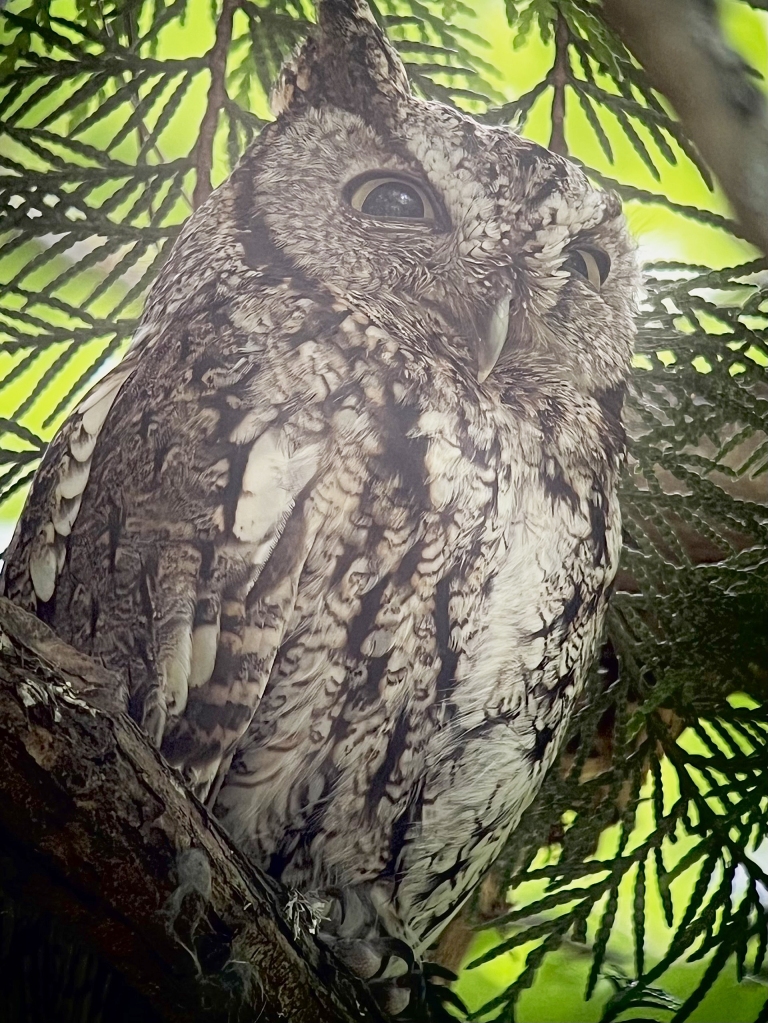
Back across the bridge to West Kelowna, and we visited a nest site of Flammulated Owl, enjoying views of the bird as it sat at the entrance to its cavity. We’d had a fantastic day of birding and we returned to Penticton for the night.

June 26 – Our morning began near Okanagan Falls. Here, we enjoyed watching several Burrowing Owls at their reintroduction burrows. The species was native to the valley but has been extirpated for nearly 40 years. Other birds seen out amongst the sagebrush included Western and Eastern kingbirds, Mountain Bluebirds, Lark Sparrow and Western Meadowlark. A Yellow-breasted Chat could be heard singing in the distance. Our best look at a Black Bear was here amongst the sagebrush as well.

We stopped at Okanagan Falls to look for an American Dipper, with no luck. As we drove past Mahoney Lake, we saw a couple of Pied-billed Grebes. We had lunch at Christie Memorial Park in OK Falls, where Killdeer, Cedar Waxwing, Western Wood-Pewee and Black-capped Chickadee kept us entertained.
After lunch we made our way up McKinney Road, east of Oliver. We paused in a little draw to watch a male Black-chinned Hummingbird. Further up the road we found a couple of Gray Flycatchers, a species that is very range restricted and found in only a few locations in Canada, all in the Okanagan Valley. Andy pointed out a Golden Eagle flying through the pine trees.

We finished off at Road 22, north of Osoyoos, where we encountered over 30 species. Highlights included a pair of Northern Harriers, a Belted Kingfisher, Cliff Swallow, House Wren, Yellow-breasted Chat, Bobolink and Black-headed Grosbeak, to name a few.
June 27 – We made our way from Penticton to Vancouver today, stopping first in the Similkameen Valley near Cawston, in hopes of finding a Long-billed Curlew. Unfortunately, no curlew was to be seen this morning though. Andy spotted a Bobolink here, and there was a large flock of Brewer’s and Red-winged blackbirds working their way through the fields.
At Nighthawk Road, near the USA border, it was quiet, though we did see a couple of Brewer’s Sparrows, which was our target species for this location. Lark Sparrow was also noted. Vesper Sparrow and Western Meadowlark were also noted.
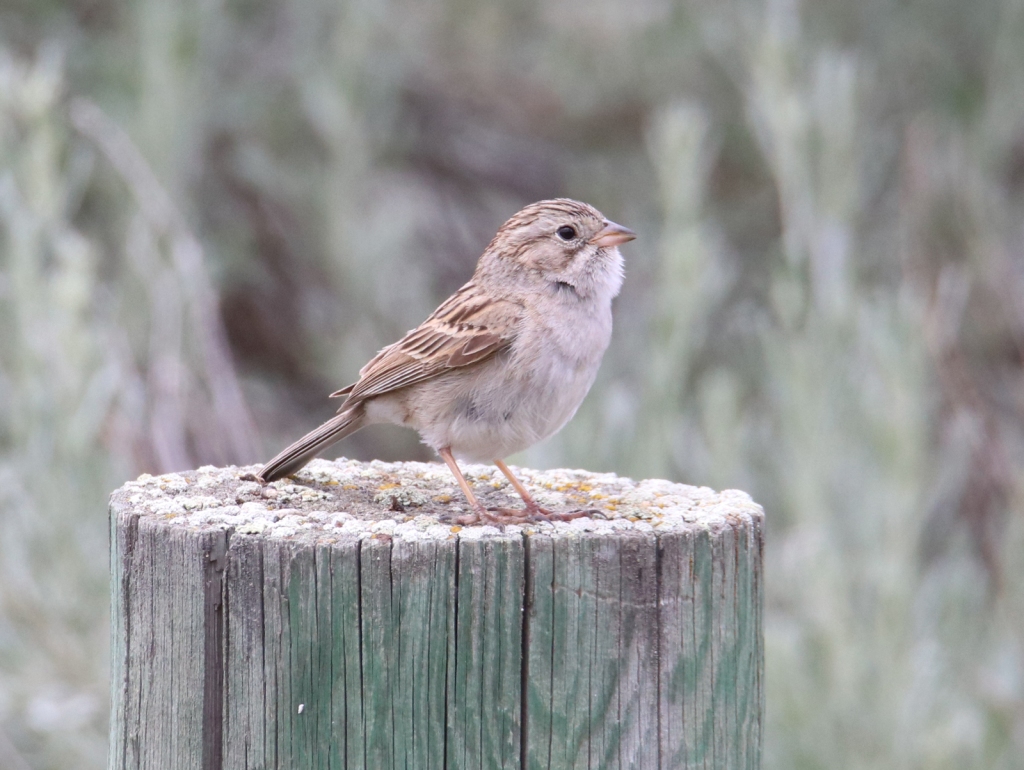
After stopping to pick up lunch in Princeton we carried on to Manning Park where we had lunch at the lodge. There were plenty of Columbian Ground-Squirrels here to keep us entertained while we ate. Thunder clapped loudly from some dark storm clouds nearby, and we drove through some heavy downpours this afternoon. We took a walk at the Beaver Pond between showers, and saw a few interesting birds like Willow Flycather, Ruby-crowned Kinglet, Swainson’s Thrush, Lincoln’s Sparrow, Townsend’s Warbler and Western Tanager. We then completed the long drive into Vancouver where we spend the next two nights.
June 28 – This morning we made our way through the heart of Vancouver over to the North Shore. Here, we visited Lighthouse Park in West Vancouver. It was a lovely morning and we enjoyed our walk through the towering old growth coniferous forest. Birds included Chestnut-backed Chickadees, Band-tailed Pigeon, Anna’s Hummingbird, a Black Swift, Olive-sided Flycatcher, Steller’s Jay, Brown Creeper, a female Black-throated Gray Warbler, and many others. Once we reached the ocean, we added Pelagic Cormorant, Bald Eagle, Glaucous-winged Gull, and 4 Caspian Terns to our day list. New for the mammal list was a Douglas’s Squirrel.
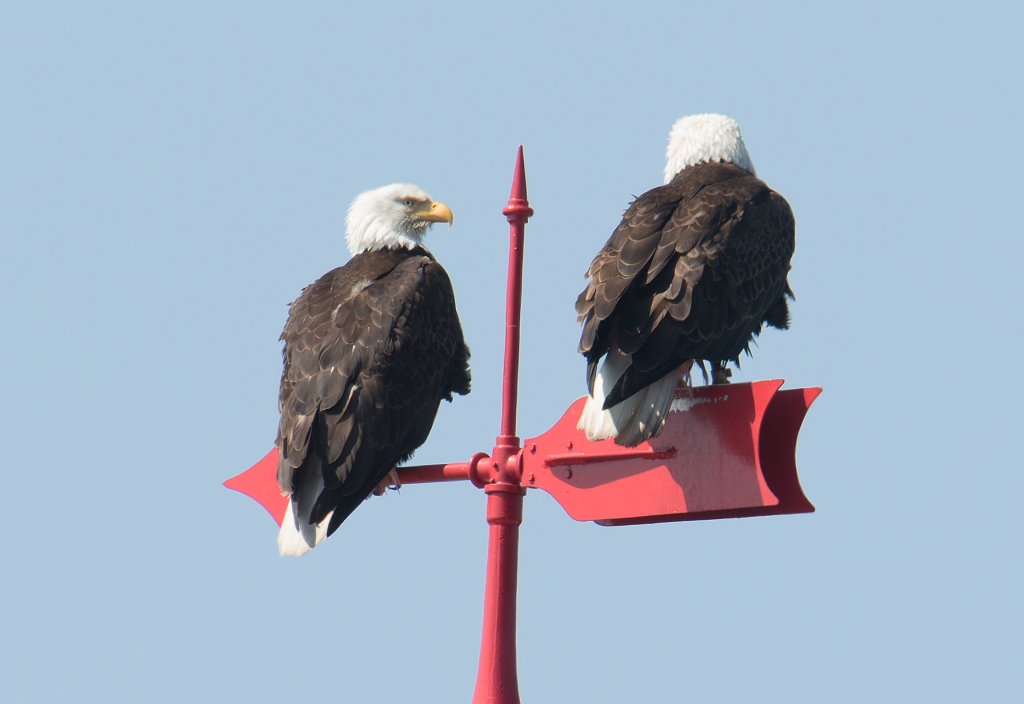
We picked up lunch at the Safeway in West Vancouver, and then headed down to the beach at Ambleside Park for a picnic. Highlight here, in the bird department, were three Harlequin Ducks.
Final birding stop of the day was up at the cross country ski trails on Cypress Mountain. Red-breasted Sapsucker was a target here, our fourth sapsucker species of the tour. It didn’t take us long to find several of these attractive woodpeckers. We also had great views of our only Varied Thrush of the tour here, and several more Band-tailed Pigeons were seen flying past. A quick stop at a viewpoint on the way down the mountain, gave us sweeping views of the Vancouver and Lower Mainland area below.
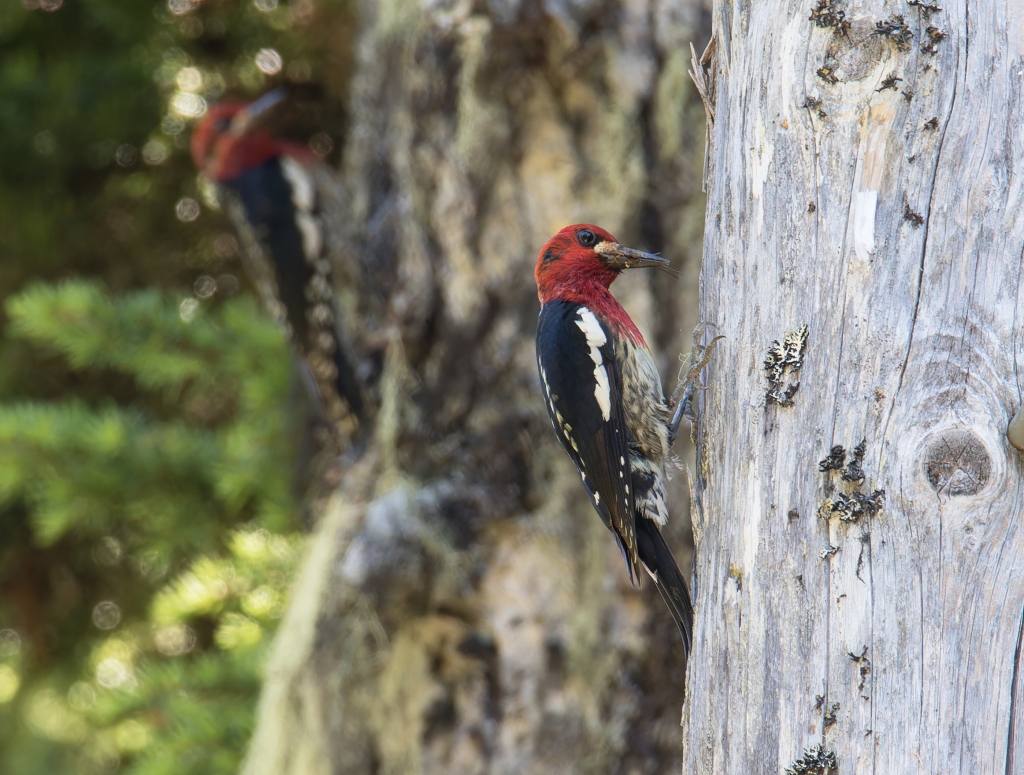
June 29 – This morning we visited the Tsawwassen Ferry Jetty. We had great looks at several Black Oystercatchers here, as well as many Glaucous-winged Gulls and hundreds of Great Blue Herons. As we drove past the terminal to turn around, I spotted three Brown Pelicans flying past, but it had to go down as leader only. We enjoyed watching 5 Harlequin Ducks here as well.
Our final birding stop was at the Reifel Refuge in Ladner, where we spent several hours. During our visit, we tallied 45 species, four of which were new for the tour (Northern Pintail, Bushtit, Bewick’s Wren and Purple Martin!). We had a late lunch near the airport, during which time we finished off our list. We’d tallied about 208 species as a group. I dropped the group off at the airport and another tour came to an end.
Bird Species on tour: Trumpeter Swan; Canada Goose; Wood Duck; Blue-winged Teal; Cinnamon Teal; Northern Shoveler; Gadwall; American Wigeon; Mallard; Northern Pintail; Green-winged Teal; Canvasback; Redhead; Ring-necked Duck; Lesser Scaup; Harlequin Duck; Bufflehead; Common Goldeneye; Barrow’s Goldeneye; Hooded Merganser; Common Merganser; Ruddy Duck; California Quail; Ruffed Grouse; Gray Partridge; Ring-necked Pheasant; Pied-billed Grebe; Horned Grebe; Red-necked Grebe; Eared Grebe; Western Grebe; Clark’s Grebe; Rock Pigeon; Band-tailed Pigeon; Eurasian Collared-Dove; Mourning Dove; Common Nighthawk; Black Swift; Vaux’s Swift; White-throated Swift; Black-chinned Hummingbird; Anna’s Hummingbird; Calliope Hummingbird; Rufous Hummingbird; Virginia Rail; Sora; American Coot; Sandhill Crane; Black-necked Stilt; American Avocet; Black Oystercatcher; Killdeer; Marbled Godwit; Wilson’s Snipe; Wilson’s Phalarope; Spotted Sandpiper; Greater Yellowlegs; Willet; Franklin’s Gull; Ring-billed Gull; California Gull; Herring Gull; Glaucous-winged Gull; Caspian Tern; Forster’s Tern; Common Loon; Pelagic Cormorant; Double-crested Cormorant; American White Pelican; Double-crested Cormorant; Great Blue Heron; Black-crowned Night-Heron; White-faced Ibis; Turkey Vulture; Osprey; Golden Eagle; Northern Harrier; Cooper’s Hawk; Bald Eagle; Swainson’s Hawk; Red-tailed Hawk; Flammulated Owl; Western Screech-Owl; Burrowing Owl; Great Gray Owl; Belted Kingfisher; Williamson’s Sapsucker; Yellow-bellied Sapsucker; Red-naped Sapsucker; Red-breasted Sapsucker; Lewis’s Woodpecker; American Three-toed Woodpecker; Downy Woodpecker; Hairy Woodpecker; Pileated Woodpecker; Northern Flicker; American Kestrel; Merlin; Peregrine Falcon; Olive-sided Flycatcher; Western Wood-Pewee; Alder Flycatcher; Willow Flycatcher; Least Flycatcher; Hammond’s Flycatcher; Gray Flycatcher; Dusky Flycatcher; Western Flycatcher; Say’s Phoebe; Western Kingbird; Eastern Kingbird; Hutton’s Vireo; Cassin’s Vireo; Warbling Vireo; Red-eyed Vireo; Canada Jay; Steller’s Jay; Black-billed Magpie; Clark’s Nutcracker; American Crow; Common Raven; Black-capped Chickadee; Mountain Chickadee; Chestnut-backed Chickadee; Boreal Chickadee; Northern Rough-winged Swallow; Purple Martin; Tree Swallow; Violet-green Swallow; Bank Swallow; Barn Swallow; Cliff Swallow; Bushtit; Ruby-crowned Kinglet; Golden-crowned Kinglet; Red-breasted Nuthatch; Pygmy Nuthatch; Brown Creeper; Rock Wren; Canyon Wren; House Wren; Pacific Wren; Marsh Wren; Bewick’s Wren; American Dipper; European Starling; Gray Catbird; Western Bluebird; Mountain Bluebird; Townsend’s Solitaire; Varied Thrush; Veery; Swainson’s Thrush; Hermit Thrush; American Robin; Cedar Waxwing; House Sparrow; Evening Grosbeak; House Finch; Purple Finch; Cassin’s Finch; Red Crossbill; White-winged Crossbill; Pine Siskin; American Goldfinch; Chipping Sparrow; Clay-colored Sparrow; Brewer’s Sparrow; Lark Sparrow; Fox Sparrow; Dark-eyed Junco; White-crowned Sparrow; White-throated Sparrow; Vesper Sparrow; LeConte’s Sparrow; Nelson’s Sparrow; Savannah Sparrow; Song Sparrow; Lincoln’s Sparrow; Swamp Sparrow; Spotted Towhee; Yellow-breasted Chat; Yellow-headed Blackbird; Bobolink; Western Meadowlark; Bullock’s Oriole; Red-winged Blackbird; Brown-headed Cowbird; Rusty Blackbird; Brewer’s Blackbird; Common Grackle; Northern Waterthrush; Tennessee Warbler; Orange-crowned Warbler; Nashville Warbler; MacGillivray’s Warbler; Common Yellowthroat; American Redstart; Cape May Warbler; Magnolia Warbler; Yellow Warbler; Yellow-rumped Warbler; Black-throated Gray Warbler; Townsend’s Warbler; Wilson’s Warbler; Western Tanager; Black-headed Grosbeak; Lazuli Bunting.
